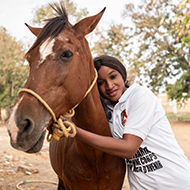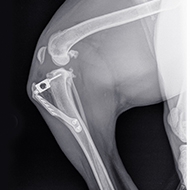Travel abroad can result in significant risks to animals
In an interesting lecture at BSAVA Congress, Simon Tappin, a European specialist in veterinary medicine, gave a brief update on imported infectious diseases in dogs.
Speaking in the last session of the nursing stream, Simon gave a brief update on some of the diseases starting to be seen in the UK due to increased pet travel and importation of rescued dogs.
Leishmania
Leishmania is one of the most common imported diseases. It mainly affects dogs and is transmitted by sand flies which can primarily be found in Southern Europe (Spain, Italy, Southern France and Greece).
Classic signs of Leishmania include weight loss, lethargy, anorexia, fever, loss of appetite and exfoliative dermatitis. Diagnosis can be made by identifying the parasite in bone marrow or lymph nodes. Treatment is a combination of allopurinol with meglumine, antimoniate or miltefosine.
Dirofilaria
Dirofilaria is also commonly found in Southern Europe. The disease is transmitted by mosquitos, with adult worms living in the pulmonary vasculature.
Clinical signs of Dirofilaria include coughing, hypertension and exercise intolerance. Diagnosis is based on demonstrating the presence of microfilariae. Adult worms can either be killed or surgically removed.
Babesia
Babesia is a tick-borne disease which causes anaemia by infecting red blood cells. It is fairly common worldwide and typical signs include weakness, fever and lethargy. Babesia can be treated by injection of imidocarb.
Erlichia
Like Babesia, Erlichia is a tick-born disease but it affects white blood cells instead. Found primarily in Southern Europe, but present worldwide, the disease leads to signs of fever, enlarged lymph nodes and lethargy.
So what should we tell clients?
Travel abroad can result in significant risks to individual animals from exposure to these disease, so it is important that clients are aware of them. Simon recommends directing clients to the ESCCAP website - a free and independent parasite control resource.
Simon also stressed that it is important to educate clients on how to prevent their pet from contracting these diseases in the first place. "Prevention is better than cure!" he said. For example, teaching clients about appropriate tick repellents and collars, and explaining the importance of fast and clean tick removal. The quicker the client removes the tick, the less likely their pet will pick up a disease.
Image (C) Nick Stevens







 Birmingham Dogs Home has issued an urgent winter appeal as it faces more challenges over the Christmas period.
Birmingham Dogs Home has issued an urgent winter appeal as it faces more challenges over the Christmas period.
